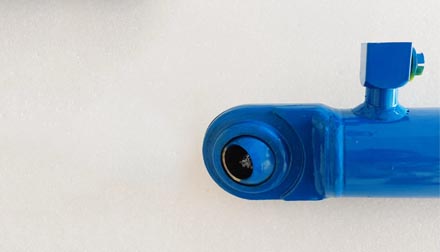Nov . 09, 2024 23:44 Back to list
Carbon Fiber Hydraulic Cylinder Manufacturer for Advanced Performance Solutions
Advancements in Carbon Fiber Hydraulic Cylinder Technology
In recent years, the automotive, aerospace, and industrial sectors have seen a surge in the adoption of carbon fiber materials, primarily due to their lightweight and high-strength properties. Among the most innovative applications of carbon fiber technology is its integration into hydraulic cylinders. This advancement promises to revolutionize the efficiency and performance of hydraulic systems across various industries.
Understanding Hydraulic Cylinders
Hydraulic cylinders are vital components in machinery that use pressurized fluid to create linear motion. Traditionally, these cylinders have been constructed from steel or aluminum, which, while durable, are heavier materials that may limit efficiency and maneuverability in certain applications. The introduction of carbon fiber into hydraulic cylinder design offers an alternative that addresses these limitations while enhancing performance.
Benefits of Carbon Fiber in Hydraulic Cylinders
1. Lightweight Construction One of the most significant advantages of carbon fiber is its weight-to-strength ratio. Carbon fiber is substantially lighter than metal, which can lead to reduced overall machinery weight. For applications in aerospace and automotive industries, reducing weight is critical for improving fuel efficiency and operational performance.
2. Higher Strength and Stiffness Carbon fiber exhibits superior strength and stiffness compared to traditional materials. This quality allows hydraulic cylinders to withstand more significant forces without deforming. As a result, they can handle more demanding applications and operate at higher pressures while maintaining structural integrity.
3. Corrosion Resistance Unlike metals, carbon fiber does not rust or corrode. This property is particularly important in environments exposed to harsh chemicals or extreme weather conditions. Hydraulic systems in marine applications, for instance, benefit significantly from this resistance, leading to lower maintenance costs and longer service life.
4. Thermal Stability Carbon fiber exhibits excellent thermal stability, meaning it can maintain strength and performance across a range of temperatures. This characteristic is essential in hydraulic applications where systems operate under variable conditions. The ability to manage thermal expansion and contraction without suffering mechanical failures enhances reliability in critical operations.
carbon fiber hydraulic cylinder company

5. Design Flexibility The manufacturing techniques used for carbon fiber allow for complex geometries and designs that may not be possible with traditional materials. This design flexibility can lead to innovations in hydraulic system layouts, reducing the need for additional components and streamlining overall system efficiency.
Industry Applications
The application of carbon fiber hydraulic cylinders is vast and varied. In the aerospace industry, where weight savings directly translate to improved fuel efficiency, these cylinders can be used in landing gear systems, control surfaces, and other mechanisms. Meanwhile, the automotive sector is exploring the use of carbon fiber cylinders in performance vehicles to enhance acceleration and handling.
In industrial settings, carbon fiber hydraulic cylinders are increasingly utilized in robotics and automation equipment, where lightweight and compact designs can improve responsiveness and precision. Additionally, construction machinery can benefit from the reduced weight, leading to better fuel efficiency and ease of transport.
Challenges and Considerations
Despite the clear advantages, there are challenges associated with the adoption of carbon fiber hydraulic cylinders. The manufacturing process can be more complex and costly than traditional methods, which might deter some industries from making the switch. Moreover, the repair and recycling of carbon fiber components present unique challenges that need to be addressed as the technology progresses.
However, as manufacturers continue to innovate and develop efficient production methods, the cost barriers are expected to decrease. Ongoing research and development are vital to unlocking the full potential of carbon fiber hydraulic cylinders, and collaborations between material scientists, engineers, and manufacturers will play a crucial role in this evolution.
Conclusion
The introduction of carbon fiber into hydraulic cylinder technology represents a significant advancement in the field of engineering and design. With its myriad benefits, including lightweight construction, superior strength, corrosion resistance, and design flexibility, carbon fiber hydraulic cylinders are set to redefine performance standards across multiple industries. As technology continues to evolve and overcome existing challenges, the future of hydraulic systems appears promising, with carbon fiber at the forefront of this transformation.
-
Fork Lift Power Units - Hebei Shenghan | Efficiency, Reliability
NewsJul.13,2025
-
1.5-Ton Turbocharged Cylinder-Hebei Shenghan|Hydraulic Solution,Energy Efficiency
NewsJul.13,2025
-
Auto Hoist Power Units-Hebei Shenghan|Efficiency&Industrial Lifting
NewsJul.13,2025
-
Double Acting Power Units-Hebei Shenghan|Hydraulic Solutions,Industrial Efficiency
NewsJul.13,2025
-
1.5 Ton Lifting Cylinder 70/82-40-290-535 - High-Performance Hydraulic Solution | Hebei Shenghan
NewsJul.13,2025
-
Fork Lift Power Units - Hebei Shenghan | Efficiency&Reliability
NewsJul.13,2025
